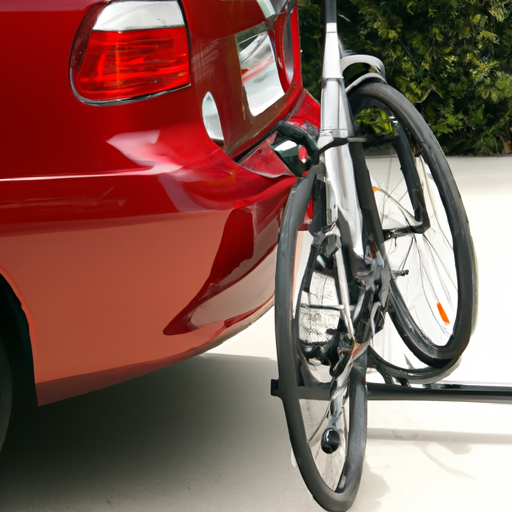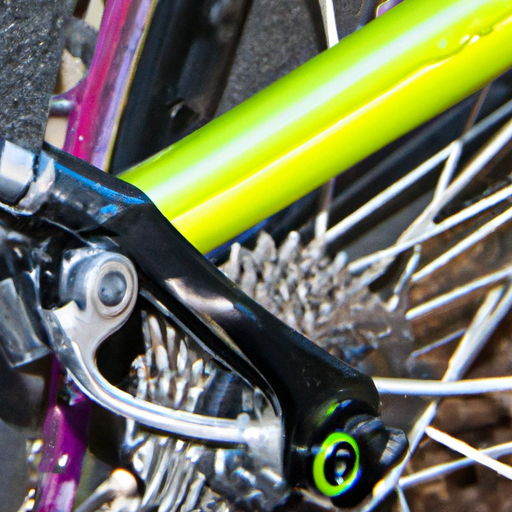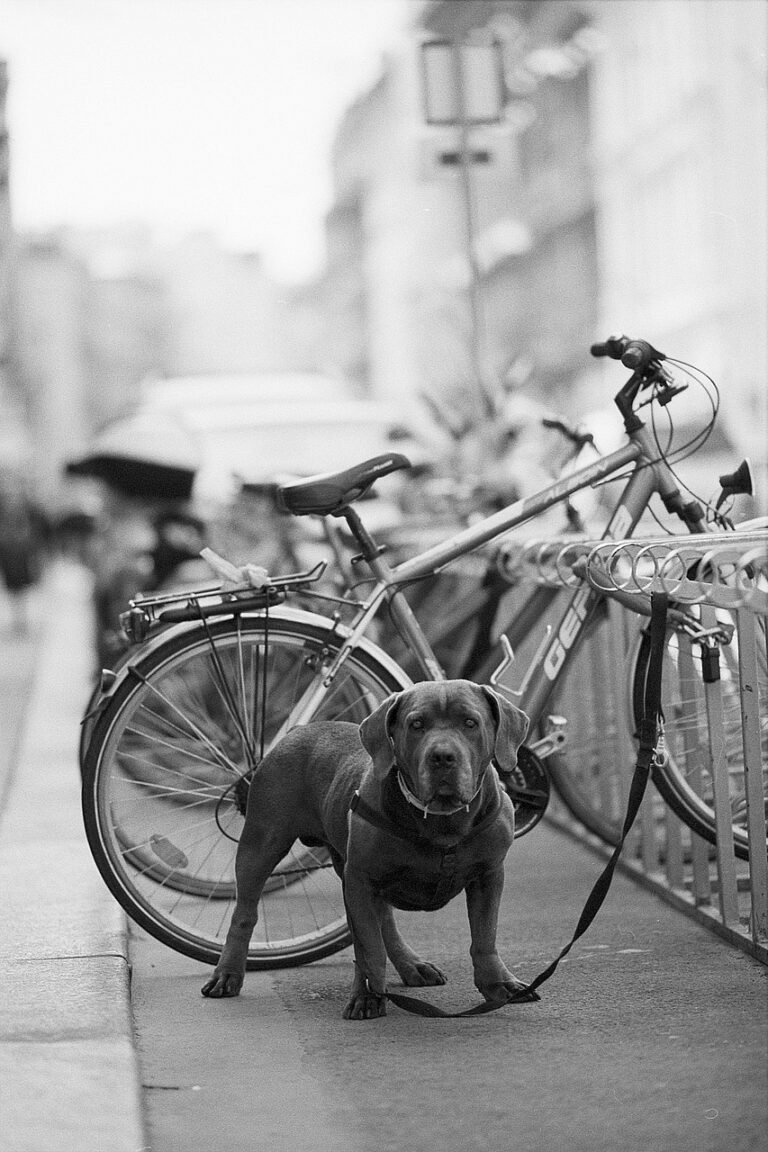What’s The Best Way To Transport My Bike On A Car?
Have you ever wondered what the best way to transport your bike on a car is? Whether you’re going on a road trip or simply need to transport your bike to a different location, finding a safe and efficient method is essential. In this article, we will explore various options and provide you with some helpful tips to ensure your bike arrives at its destination unscathed. So, if you’re ready to hit the road with your trusty bike, let’s uncover the best way to transport it on a car!
Choosing the Right Bike Rack
When it comes to transporting your bike on a car, one of the most important decisions you’ll make is choosing the right bike rack. With numerous options available, it can be overwhelming to figure out which one is best suited for your needs. But don’t worry, we’re here to guide you through the process.
Consider the type of car you have
Before you start exploring different bike rack options, it’s crucial to consider the type of car you own. Some racks are specifically designed to fit certain car models or types, while others are more universal. You’ll want to ensure that the bike rack you choose is compatible with your vehicle to ensure a secure fit and safe transportation.
Determine the number of bikes to transport
Another factor to consider when choosing a bike rack is the number of bikes you plan to transport. Whether you’re traveling alone or with friends, there are bike racks available that can accommodate different bike capacities. Knowing the number of bikes you need to transport will help narrow down your options and ensure you choose a rack that meets your requirements.
Evaluate different bike rack options
Now that you’ve considered your car type and the number of bikes you need to transport, it’s time to evaluate the different bike rack options available. There are three main types to choose from: rear-mounted, roof-mounted, and hitch-mounted bike racks. Each type has its own advantages and disadvantages, so let’s dive into each one to help you make an informed decision.
Rear-Mounted Bike Racks
Rear-mounted bike racks are a popular choice among cyclists due to their easy installation and affordability. These racks are attached to the rear of your car, either on the trunk or the rear hatch.
Pros of rear-mounted bike racks
One of the biggest advantages of rear-mounted bike racks is their affordability. They are generally more cost-effective compared to other types of racks. Additionally, they are easy to install and can be mounted on most cars without requiring any additional equipment. Rear-mounted racks also provide easy access to your bikes, making loading and unloading a breeze.
Cons of rear-mounted bike racks
Although rear-mounted bike racks have their advantages, it’s important to consider the drawbacks as well. One of the main drawbacks is limited rear visibility. Since the rack is attached to the back of your car, it may obstruct your view through the rearview mirror or rear window. Another downside is that rear-mounted racks may not be as secure as other types, as they are more susceptible to theft or damage.
Types of rear-mounted bike racks
There are several types of rear-mounted bike racks to choose from, including strap-on racks, trunk-mounted racks, and spare tire racks. Strap-on racks are the most basic and affordable option, but they may not provide as secure of a fit as other types. Trunk-mounted racks utilize straps and hooks to secure the rack to your car’s trunk, while spare tire racks are specifically designed for vehicles with an external spare tire.
Installation and usage tips
When installing a rear-mounted bike rack, it’s important to ensure a secure fit. Follow the manufacturer’s instructions carefully and double-check that the rack is properly installed and tightened. It’s also advisable to use additional straps or bungee cords to provide extra stability and minimize any movement of the bikes during transit. Regularly inspect the rack and make adjustments as necessary to ensure a safe and secure journey.
Roof-Mounted Bike Racks
Roof-mounted bike racks are a popular choice for those who want to maximize the available space on their car. These racks are mounted on the roof of your car, either directly on the crossbars or using a separate mounting system.
Advantages of roof-mounted bike racks
One of the main advantages of roof-mounted bike racks is that they keep the rear of your car accessible, allowing for easy access to the trunk or rear hatch. Roof racks also provide a clear rear view, as they do not obstruct the rear window. In addition, roof-mounted racks can accommodate a variety of bikes, including those with non-traditional frame designs or large wheel sizes.
Disadvantages of roof-mounted bike racks
While roof-mounted bike racks have their benefits, they also come with a few downsides. The main disadvantage is the added height to your vehicle, which can make it challenging to access low-clearance areas or parking garages. Another drawback is the additional wind resistance, which may impact your car’s fuel efficiency. Additionally, loading and unloading bikes onto a roof rack can be more challenging and require extra effort.
Different types of roof-mounted bike racks
There are several types of roof-mounted bike racks to choose from, including fork-mounted racks, frame-mounted racks, and wheel-mounted racks. Fork-mounted racks require the removal of the front wheel and secure the bike by mounting the fork onto the rack. Frame-mounted racks secure the bike by clamping onto the frame, while wheel-mounted racks secure the bike by holding onto the wheels.
Installation and usage guidelines
When installing a roof-mounted bike rack, it’s important to secure it tightly to the crossbars and check for any movement or instability. Follow the manufacturer’s instructions carefully to ensure a proper fit and secure the bikes to the rack as instructed. Additionally, be mindful of the height clearance when driving to avoid any potential collisions or damage to the bikes or your car.
Hitch-Mounted Bike Racks
Hitch-mounted bike racks are a popular choice for those who want easy access to their bikes and don’t want to worry about height clearance or lifting bikes onto the roof. These racks are installed on the rear hitch receiver of your car.
Benefits of hitch-mounted bike racks
One of the main advantages of hitch-mounted bike racks is their ease of use. Loading and unloading bikes is a breeze, as there is no need to lift them onto the roof or deal with limited rear visibility. Hitch-mounted racks also provide excellent stability and security for your bikes during transit. In addition, they generally offer higher weight capacity compared to other types of racks, allowing you to transport multiple bikes or heavier bikes with ease.
Drawbacks of hitch-mounted bike racks
Despite their advantages, hitch-mounted bike racks have a few drawbacks to consider. One of the main concerns is the accessibility of your trunk or rear hatch. Depending on the design of the rack and your car, it may be challenging to open the trunk or hatch with the bikes loaded. Additionally, hitch-mounted racks require a hitch receiver, which may need to be installed if your car does not already have one.
Various types of hitch-mounted bike racks
There are several types of hitch-mounted bike racks to choose from, including platform racks, hanging racks, and tilting racks. Platform racks provide a sturdy and stable platform for your bikes and often offer the easiest loading and unloading experience. Hanging racks suspend the bikes by the top tube, while tilting racks allow you to tilt the rack down for easy access to the trunk or rear hatch.
Installation and usage recommendations
When installing a hitch-mounted bike rack, it’s crucial to ensure that the rack is properly attached to the hitch receiver. Follow the manufacturer’s instructions carefully and make sure all connections are secure. Consider using a hitch lock to prevent theft of the rack or bikes. Additionally, be mindful of the weight capacity of the rack and distribute the weight evenly when loading multiple bikes.
Preparing Your Bike for Transportation
Before loading your bike onto the chosen bike rack, it’s essential to properly prepare your bike to ensure a safe and secure journey.
Check tire pressure and secure loose items
Start by checking the tire pressure of your bike to ensure they are properly inflated. This will help prevent any unnecessary damage or accidents during transit. Additionally, make sure to secure any loose items on your bike, such as saddlebags or water bottle holders, to minimize the risk of them falling off during transportation.
Remove accessories and empty water bottles
To avoid any damage or loss, it’s best to remove any accessories attached to your bike, such as lights, bells, or bike computers. These items can get easily damaged or cause damage to other bikes during transit. It’s also advisable to empty and remove any water bottles from their holders to prevent them from falling or spilling during the journey.
Protect delicate parts and secure the frame
To protect delicate parts of your bike, such as the derailleur or suspension, consider using bike-specific protectors or padding. This will help prevent any scratches, dents, or damage that may occur due to vibrations or movement during transportation. Additionally, secure the frame of your bike to the bike rack using straps or bungee cords to ensure it remains stable and secure.
Consider using a bike cover
If you want to provide an extra layer of protection for your bike, consider using a bike cover. A bike cover can shield your bike from dirt, dust, debris, and potentially harsh weather conditions during transit. It’s essential to ensure the cover is properly secured to prevent any flapping or movement that may cause damage to the bike or other vehicles.
Loading and Securing the Bike
Once your bike is properly prepared, it’s time to load and secure it onto the bike rack. Follow these steps to ensure a safe and secure setup.
Follow the manufacturer’s instructions
Every bike rack has specific instructions on how to properly load and secure a bike. It’s crucial to read and follow these instructions provided by the manufacturer. Each rack may have different loading and securing mechanisms, so familiarize yourself with them before attempting to load your bike onto the rack.
Attach the bike to the rack securely
When attaching your bike to the rack, make sure it is properly positioned and aligned. Use the designated attachment points or mechanisms provided by the rack to secure your bike. This may involve attaching straps, clamps, or hooks to specific parts of your bike, such as the frame, wheels, or fork. Ensure that each attachment is tight and secure to prevent any movement or instability.
Use additional straps or bungee cords if necessary
If you feel that the provided attachments are not sufficient to secure your bike, consider using additional straps or bungee cords for added stability. These can be used to further secure your bike to the bike rack, minimizing any movement or potential damage during transit. However, be careful not to over-tighten the straps, as this may lead to damage or distortion of the bike frame.
Double-check the stability and tightness
Before hitting the road, it’s crucial to double-check the stability and tightness of all attachments. Give your bike a gentle shake and test for any movement or loose connections. Ensure that all straps, clamps, or hooks are secure and tight. If you notice any instability or looseness, make the necessary adjustments or reattach the bike to the rack to ensure a safe and secure setup.
Driving Safely with a Bike on the Car
Once your bike is securely loaded onto the bike rack, it’s important to drive safely and keep an eye on the bike and rack during your journey.
Stay within recommended speed limits
When driving with a bike on your car, it’s advisable to stay within the recommended speed limits. Excessive speed can create additional wind resistance, potentially affecting the stability and security of the bike rack. By driving at a safe and controlled speed, you minimize the risk of accidents or damage to your bike or rack.
Be cautious of height clearance
If you have a roof-mounted bike rack, be cautious of height clearance when driving. Make sure to take note of any low-clearance areas, such as parking garages or underpasses, to avoid any collisions or damage to your bikes. Be vigilant and aware of the extra height that the bikes and the rack add to your vehicle.
Avoid sudden accelerations or stops
To prevent any unnecessary strain on the bikes and rack, avoid sudden accelerations or stops whenever possible. Gradually accelerate and decelerate to ensure a smoother ride for your bike. This will help minimize any movement or potential damage during sudden changes in speed.
Regularly check the bike during breaks
If you’re traveling long distances, it’s a good idea to take regular breaks and check on the bike and rack. Inspect the attachment points, straps, and overall stability of the bike to ensure everything is in order. Tighten any loose connections if necessary. Regularly checking the bike during breaks will give you peace of mind and prevent any issues from going unnoticed during the journey.
Storing and Maintaining Bike Racks
Proper storage and maintenance of your bike rack are essential to prolong its lifespan and ensure optimal functionality.
Properly clean and dry the bike rack after use
After each use, it’s important to properly clean and dry your bike rack. Use a mild detergent and a soft brush or cloth to clean any dirt, grime, or debris that may have accumulated. Rinse the rack thoroughly and allow it to dry completely before storing it. This will prevent any corrosion or damage caused by moisture.
Store the bike rack in a suitable location
When not in use, store your bike rack in a suitable location to protect it from the elements and potential damage. Ideally, store it in a clean and dry area, such as a garage or shed. If space is limited, consider investing in a bike rack storage system or wall mount to keep it organized and out of the way.
Regularly inspect and maintain the rack
Regularly inspect your bike rack for any signs of wear or damage. Check for loose connections, bent parts, or any other issues that may affect its performance or safety. Make any necessary repairs or replacements to ensure the rack remains in optimal condition. Refer to the manufacturer’s guidelines for maintenance recommendations specific to your bike rack.
Keep an eye on any warranty or service requirements
If your bike rack comes with a warranty, familiarize yourself with its terms and conditions. Be aware of any specific service requirements or recommendations provided by the manufacturer. Adhering to these guidelines will help maintain the warranty coverage and ensure any necessary repairs or replacements are addressed promptly.
Additional Accessories and Considerations
To enhance your biking experience while transporting your bike on a car, there are several additional accessories and considerations worth exploring.
Using bike locks and security measures
To deter theft or unauthorized access to your bikes, consider using bike locks or additional security measures. This can provide peace of mind when leaving your bikes unattended, whether at a rest stop or during overnight stays. Invest in high-quality locks that are designed specifically for bikes to ensure maximum security.
Loading multiple bikes on the same rack
If you frequently transport multiple bikes, it’s essential to consider the loading configuration on the bike rack. Ensure that the bikes are evenly distributed to maintain stability and prevent any shifting during transit. Use caution when attaching or detaching bikes to avoid any accidental damage to other bikes or the rack itself.
Considering alternative transportation methods
While transporting your bike on a car is a convenient option, it may not always be the most practical or feasible. Depending on your specific needs, it’s worth considering alternative transportation methods, such as bike racks for public transit or dedicated bike transport services. These options can provide a more versatile and hassle-free way to transport your bike.
Exploring bike racks for unique bike designs
If you have a unique bike design, such as a recumbent bike or a fat bike, it’s important to choose a bike rack that can accommodate your specific bike. Look for specialized racks that are designed to fit these unique bike designs. It’s advisable to consult with experts or do thorough research to ensure compatibility and secure transportation.
Conclusion
Choosing the right bike rack and properly preparing and securing your bike are crucial steps to ensure a safe and hassle-free transportation experience. Whether you opt for a rear-mounted, roof-mounted, or hitch-mounted bike rack, each type has its own advantages and considerations. By following the installation and usage guidelines, driving safely, and regularly maintaining your bike rack, you can maximize your biking adventures with ease. With the right bike rack and proper precautions, you’ll be able to explore new trails and destinations without worrying about the transportation of your beloved bike.





